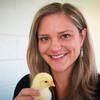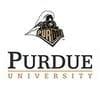Explore all the information on
Poultry welfare
Proper animal welfare involves providing the proper housing, management, nutrition, disease prevention and treatment, responsible care, humane handling and, when necessary, humane euthanasia. These factors allow for the most optimal and humane growing environment. The concept of animal welfare includes three elements: the bird’s normal biological functioning, its emotional state and its ability to express its natural behaviors. Improving animal welfare can be accomplished through offerings like poultry feed enrichment, which can reduce stress, thereby increasing performance, productivity and profitability. Animal welfare is currently a major requirement for intensive poultry production. Beak trimming, stocking density, free access to feed, heat stress, and air pollutants became important issues, which are regulated in several countries. Animal welfare is observed by watching how birds naturally behave and even by looking at mortality stemming from aggressive behaviors.
This issue will cover: -What are behavioral needs? -What is dustbathing? -Dustbathing in commercial housing systems Substrate...
Comments : 0
Recommendations: 0
In this issue: Introduction to the gut microbiome The function of prominent bacterial phyla Introduction to the gut-brain axis How microbial imbalance affects poultry welfare Practical strategies to improve the gut health of poultry What is the gut...
Comments : 0
Recommendations: 0
I. INTRODUCTION Production improvements in commercial meat chickens via genetic selection and improved husbandry have resulted in rapid growing birds. These birds have endemically reduced locomotor ability; a conservative estimate is that 30% of birds in a flock are likely to have poor mobility (Knowles et al, 2008). Leg weakness has a direct impact on production due to lower bird quality, which may result in culls or condemnation of carcasses. While not well understood, early rapid...
Comments : 0
Recommendations: 0
I. INTRODUCTION In Australia, the National Animal Welfare Research Development and Extension (RD&E) Strategy is a cross-sectoral strategy under the National Agricultural RD&E Framework. Each of the livestock industries in Australia, including the egg industry, is represented by this National Strategy, which is active in identifying the key areas of importance for the welfare of livestock. Over the last four to five years, in particular, this National Strategy has consistently...
Comments : 0
Recommendations: 0
Managing flies in poultry farms is crucial for maintaining flock health, ensuring optimal productivity, and protecting public health. Flies thrive in poultry environments due to the availability of manure, spilled feed, and warm, humid conditions. To address this issue, it is essential to adopt a multi-faceted approach that incorporates changes in nutrition, management, water use, environment, and pest control strategies. Understanding the Fly Problem in Poultry...
Comments : 0
Recommendations: 0
I. INTRODUCTION Chicken meat and egg production has been on the increase in all continents with the highest increases in Asia and South America (Mandal, 2010). High temperatures coupled with high humidity impose severe stress on birds and can cause huge economic loss. Such loss is due to reduced performance, immune suppression, and an increase in respiratory disease and mortality (Mandal, 2010). Exposure of chickens to high temperature also increases the induction of heat shock...
Comments : 0
Recommendations: 0


Supplemental dietary methionine sources have a neutral impact on oxidative status in broiler chickens
Suggested link
1. Introduction Chickens have a well-developed trichromatic vision system composed of diverse photoreceptors and cones [1], allowing them to perceive a broad range of the color spectrum [2]. Chickens can see in ultraviolet wavelengths and perceive colors that are not visible to most mammals [3], including humans [4]. The chickens’ sharp visual capabilities allow them to effectively survey their surroundings and localize feed [5,6]. In addition, broiler chickens have shown...
Comments : 1
Recommendations: 2
Jonathan Cade, President of Hy-Line International, discusses his new role as Chairman of the U.S. Poultry & Egg Association, the organization's key initiatives, and the industry's challenges....
Comments : 4
Recommendations: 0


Will New Version of GMP Boost the Veterinary Drugs Industry?
Suggested link
Lilong Chai (University of Georgia) discusses advantages and issues of cage-free poultry houses regarding pecking behavior, egg production, and dust bathing, among other aspects, in this Engormix interview. ...
Comments : 0
Recommendations: 1
1. Introduction Factors such as investments in breeding facilities and the adoption of advanced technologies have been decisive in consolidating Brazil’s global leadership in broiler chicken exports [1]. Among the available structural typologies, the “dark house” stands out as an intensive production system, equipped with automated systems that control variables such as temperature, relative humidity, wind speed, and light intensity. The precise control of these...
Comments : 0
Recommendations: 0
.jpg&w=3840&q=75)

Effects of superdoses of phytase on peaking Hy-Line W-36 laying hen egg production and egg quality
Suggested link
What is the pre-slaughter phase? The preslaughter phase is the last phase of the broiler chicken’s life before slaughter. This phase includes multiple steps: withdrawal of feed and water, catching, loading into transportation crates, and transportation by road, In some cases, chickens may be placed in lairage (waiting area)...
Comments : 0
Recommendations: 1
What is live haul? Turkeys are typically raised for 10 to 20 weeks, depending on bird sex, size, and product criteria for markets. Once the market weight is achieved, turkeys are herded, loaded, and transported to slaughter plants for stunning and processing. ...
Comments : 0
Recommendations: 1
The egg industry in the United States maintains approximately 300 million hens each year (United Egg Producers, 2025). For every laying hen that is hatched, approximately one male...
Comments : 0
Recommendations: 1
Thomas Dixon (Hy-Line) discusses the cost and price increase that comes with this change, and how to adapt to it, during the Avicolas and Porcinos event in Buenos Aires, Argentina....
Comments : 1
Recommendations: 0
Guoming Li (University of Georgia) explains how broiler activities such as locomotion and movement can be quantified as an activity index, which is automatically computed by determining changes in pixels, during this Engormix interview. ...
Comments : 0
Recommendations: 0
We’re excited to announce the upcoming Poultry Nutrition 101 Online Course, which is currently in development. This course is designed for the general public, growers, industry professionals, and non-nutrition academic groups interested in poultry nutrition and feed management. This interactive course will provide fundamental and applied poultry nutrition knowledge. Stay updated by clicking...
Comments : 0
Recommendations: 0
1. Introduction For decades, the livestock production sector has focused on improving animal production efficiency to stretch out the world population’s needs concerning farmed products [1]. This is particularly true for conventional broiler chickens’ production, where advancements in genetics, nutrition programs, management strategy, and medicine have resulted in more efficient birds, allowing a decrease of the slaughter age dramatically [2,3]. This is well illustrated...
Comments : 0
Recommendations: 0
1. Introduction 1.1. Background Chickens struggle to recognize other individuals after visible changes are applied to the comb or plumage [1]. Much like chickens are able to use visual cues to differentiate each other, artificial intelligence (AI) is capable of utilizing image or video inputs for reidentification (re-ID) purposes. Animal re-ID, the task of identifying individual animals within one (or sometimes several) species, finds applications in various fields,...
Comments : 0
Recommendations: 0
The Unseen Cost of Price Fluctuation Poultry farmers and integrators live with constant uncertainty. One day, the live bird price is INR 100/kg; the next day, it's INR 70. Despite careful planning and biosecurity, they find themselves at the mercy of a market without controls, hedging tools, or predictability. This snake-and-ladder game isn’t just a minor inconvenience. For thousands of farmers and integrators, it means boom-or-bust cycles, mounting debt, and...
Comments : 0
Recommendations: 0
Broiler Industry The broiler industry is a crucial pillar of India’s agricultural economy, ensuring food security, employment, and rural development. However, ethical concerns surrounding animal welfare, feed sourcing, worker rights, environmental sustainability, and consumer transparency continue to challenge the industry. As the sector grows, addressing these ethical issues is critical for long-term sustainability and global competitiveness. Current Ethical Challenges...
Comments : 2
Recommendations: 0




























